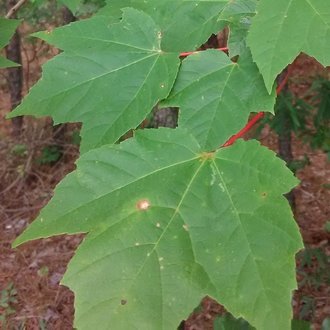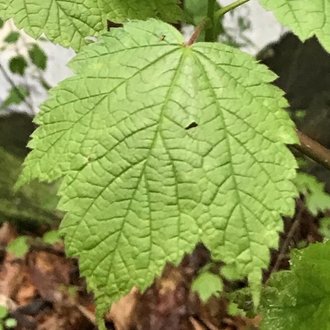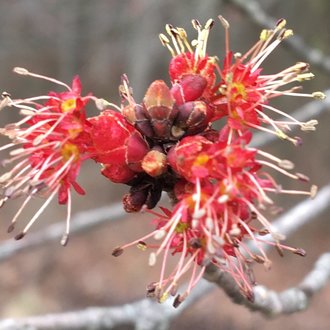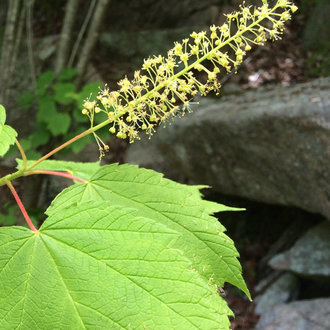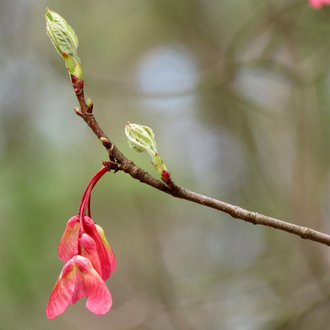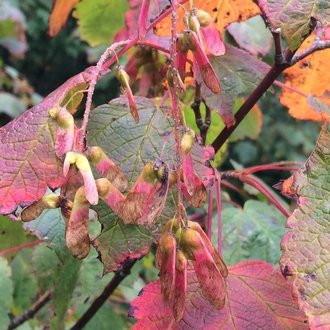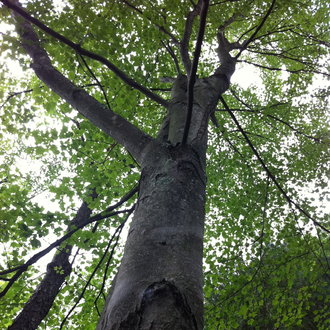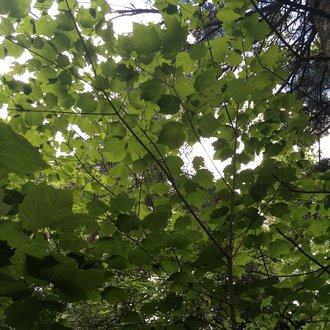Red Maple vs Mountain Maple
These plants can overlap in habitat, and are confused because both have serrated leaf margins, and both can have reddish petioles. They are easily distinguished by leaf texture and flowering date and appearance. Red maple has a variable leaf shape that sometimes looks like that of mountain maple.
Red Maple (Acer rubrum) | Mountain Maple (Acer spicatum) |
The most abundant tree species in North America, and a habitat generalist, native to a wide range across the eastern part of the continent. | An understory shrub or small tree native to the northeastern U.S. and northern Midwest, and also found at high elevations in the Appalachians. |
Leaves have fewer side-veins and a flatter texture. Photo © coatlicue (iNaturalist), Public Domain. | Mature leaves are strongly textured, with numerous, prominently-depressed side veins. Photo © Summit Metro Parks, CC BY 4.0. |
Blooms close to the stem, vibrant red flowers with some yellow. Blooms very early, before leafing out. Photo © Mark, CC BY 4.0. | Blooms in a long, upright spike of yellow-green flowers. Blooms late, once fully leafed out. Photo © Derek, CC BY 4.0. |
Samaras form early, before tree leafs out in spring. Samaras long gone by autumn. Photo © Katja Schulz, CC BY 4.0. | Samaras ripen late, when foliage is changing color in autumn. Photo © Charlie Hohn, CC BY 4.0. |
Large tree to 90 feet tall and 4 feet in diameter. Often grows with a single-trunk habit. Can be a canopy tree. Photo © Charlie Inyo, CC BY 4.0. | A shrub or small tree; maximum height is 20-33 feet, maximum diameter 4-8 inches, but often much smaller, especially in the north. Photo © Charlie Hohn, CC BY 4.0. |
References & External Resources
These short lists show only links helpful for ID. For a complete list of references and resources also covering other aspects of ecology, visit the links section of the full article on each plant, which is the first entry here.



